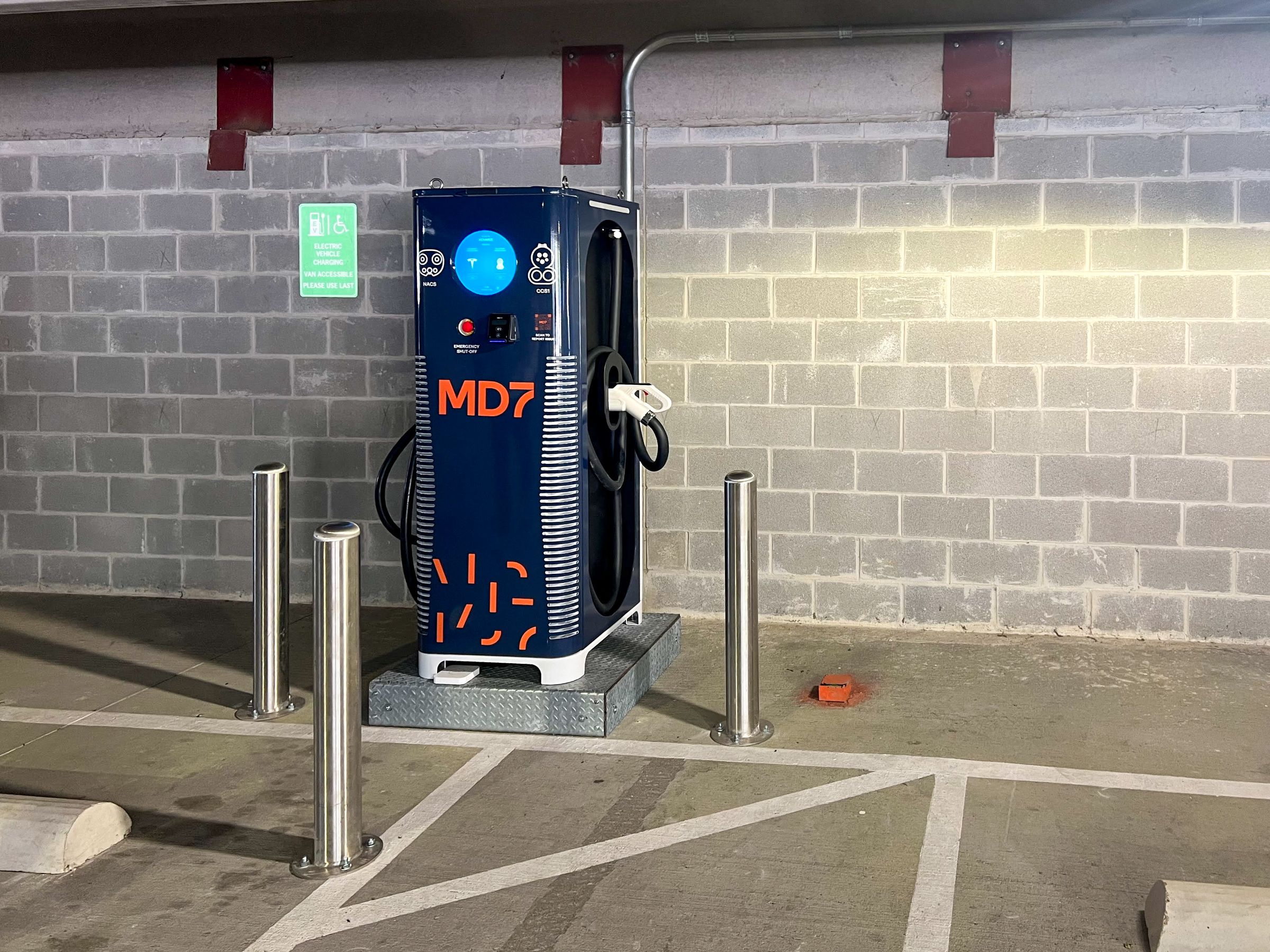The Challenge of Forecasting Site Acquisition (And What To Do About It)
By Tom Leddo
Vice President
Intro
Wireless operators are seeking new ways to navigate through the perfect storm of 100+ percent penetration (market saturation), price competition and the insatiable demand for constant high-speed connectivity. In other words, everyone has a mobile phone and the carriers are in a price war to retain and/or get new customers who have an increasing expectation for the ability to upload unlimited photos and stream unlimited video anytime, and anywhere.
But if carriers are going to be able to supply the bandwidth to meet forecasted demand OTT video, and the many other demands for wireless data, then there will need to be ongoing development of both micro and macro sites throughout the United States.
However, the development and upgrading of traditional macro sites has slowed significantly in the first half of 2015 from the frenetic pace caused by the need to upgrade networks to LTE over the last few years. Also, optimistic forecasts for small cells have yet to be reached primarily because the deployment costs per node do not provide the return on investment required to justify the installations in large volume. Furthermore, most of the major operators paused in 2015 to digest acquisitions, contemplate future financing and restructure their operations to adjust to the new realities in the wireless marketplace.
The latest forecasts indicate that capital expenditure will begin to increase for more cell sites and upgrades over the next few quarters. But it is becoming much more obvious that this rebound in cell cite development of both new and upgraded cell sites must be deployed much faster, more frequently and at lower costs.
Traditionally, site acquisition has been a very inefficient and unpredictable part of the site development process. And because site acquisition is the first part of the process for new and upgraded sites, if a forecast date is missed, the entire construction and installation schedule is thrown out of forecast and out of budget.
The wireless infrastructure industry needs to find ways to streamline site acquisition and make it much more predictable. In other words, new deployment models are needed!
The Challenge
Trying to accurately forecast site acquisition for a new cell site or to upgrade an existing one is almost impossible because the typical functions are completely subject to human behavior and thus highly variable.
This volatility can throw timelines and site deployment cost models into total disarray. Construction Managers and Project Managers need to have equipment and crews scheduled in the right place at the right time and if a lease is not executed or a permit is not obtained, the cost of moving or storing equipment and redeploying a crew can destroy margins.
A number of factors can delay a Notice To Proceed (NTP) such as leasing, zoning, permitting, structural failures, etc. Often these problems begin to snowball and throw an entire deployment budget out of whack, cost PM’s their jobs and cause heart and other stress related problems – literally.
At the beginning of any project, no one can tell you with a reliable degree of certainty when a given landlord will properly sign and return a lease or lease amendment, how long it will take a municipal employee to review and approve a permit application or zoning request or what the structural pass/fail rate will be on a group of towers – especially now that radios are mounted in the air with the antennas. We no longer operate in the days where a failed structural analysis (SA) just results in a check request. Now a failed SA leads to revisions of the RF Data Sheets to try and meet the load capacity of the existing tower which is much easier said than done and causes further delays. There is more back and forth between site acquisition and RF than I have ever seen in the industry.
One way to eliminate this wasted expense and inefficiency is to forecast more conservatively and thus give a site acquisition team more time to complete their leasing, environmental and regulatory tasks. But let’s deal in reality. Even if a reputable site acquisition vendor develops what they honestly believe to be a sound forecast, there are simply too many unknowns and unforeseeable circumstances beyond their control.
In short, meeting the forecast for NTP’s is difficult at best.
Why Site Acquisition is so Hard to Forecast – and What We Should Do About It)
- Ready, Aim, Fire!
Let’s be honest. Deployment projects rarely start on time. Budget approval takes longer than expected, the issuing of PO’s is delayed and RF data sheets are released late and often change. And while the start dates are often delayed, the on-air forecast is rarely extended to accommodate the delays. This throws PM’s into a frenzy of activity and forces them to seek corners to cut and interim milestones to meet so they “appear” to be on time. Late starts are just part of life but when they occur without subsequently pushing out the targeted completion dates along with the pressure to get sites on-air, our industry typically skips the most important, initial step – planning. Most projects develop a scope of work for billing and milestone purposes but lack a detailed step-by-step process flow to get the work completed. By preparing a detailed plan up-front, weeks and even months of inefficiencies can be trimmed off the timeline. At Md7, we begin every project in front of a wipe board where we map out a step-by-step process flow and then turn that into a Visio flow chart. After a few iterations, we end up with ten to fifteen pages of process detail that streamlines the entire project. There are literally hundreds of steps and sub-steps to get from PO to NTP and, if not planned and tracked in that same level of detail, then we fall into reactive mode – which is what typically happens in site acquisition. To successfully complete site acquisition, you must be proactive and well prepared in advance. Typically in our industry, we talk about being proactive, but rarely are we actually proactive. While this takes extra time upfront, the time saved throughout the entire project more than makes up for it.
- You can’t control (much less forecast) human behavior
I have heard it said many times that the post-NTP phase (construction and installation are the most expensive part of a deployment process and also the most predictable, but the pre-NTP, site acquisition phase is much cheaper and far less predictable and can throw the construction and installation phase into a tailspin. No matter how good of a negotiator, you can’t make a landlord sign a doc before they are ready. And if you pressure a smart landlord to sign faster they will actually strategically slow down to apply pressure for rent and other concessions. Similarly, no matter how good of a relationship you have with a municipality, you generally cannot expect a government employee or official to approve your document faster as they typically have their own strict procedures to follow. Personally, I believe that if you submit a well prepared, well organized and error-free zoning request or permit application you will get what you need MUCH faster than if you have a great relationship with the municipal employee behind the counter. Often there are well-intentioned attempts keep the site acquisition process progressing by visiting a landlord or municipality in person with a bag of bagels and waiting for them until they meet with you and grant your request or just buy them a steak dinner or a bottle of scotch. While this sounds like a great idea on a deployment call to get a slow-moving site going, it is really just confusing busyness with progress. Keep in mind the old saying “if you want it bad, you get it bad.” If you want it quickly, you get lower quality which in the end might help smooth over a deployment update, but will in the end delay on-air. - The spreadsheet deployment tracker is relic from the 1980’s
According to Wikipedia, Lotus 1-2-3 was introduced in 1982 and Microsoft introduced Excel in 1985. Since that time the handset has evolved from the car phone, to the bag phone, to the brick phone to the flip phone and now the smartphone. Similarly the mobile networks have evolved from analogue AMPS (now called 1G), to digital 2G to 3G and 4G. But, for some insane reason we still use spreadsheets to track cell site deployments. Really??? We can develop a phone that can open and close our garage doors and turn on/off an HVAC system but we can’t create a decent workflow application to track deployments??? Md7 has developed our own tracking software – LiveTrack™. Designed with the complex needs of site acquisition in mind, LiveTrack brings multidisciplinary information and milestones to a central location, providing end-to-end management oversight to all aspects of the process. And we don’t have to wait for version 2.0 or 3.0 for upgrades. We meet with the customer to fully understand their concerns and needs and design the workflow tracking to meet those concerns and needs for each project, every time. With date and time stamping, quality data management and parallel process flows, LiveTrack shaves weeks off deployment forecasts. - Decreasing pay points without increasing volume
Simply put, we need to break the cycle of giving a handful of sites to multiple site acquisition vendors, particularly based on price. In his book A Practical Guide to Training and Development, Michael Moskowitz (who also just happens to be the Director of Human Resources for Md7) writes an excellent summary of W. Edwards Deming’s 14 Points for Management. Therein, Moskowitz summarizes the fourth of Deming’s 14 points as “ ‘Move toward a single supplier for any one item.’ Multiple suppliers means greater opportunity for variation in source product quality.” In other words, by assigning more sites to a single vendor you can begin to standardize the product and quality. There are only two types of companies that can afford to survive on really low prices. The first is the small operation with limited overhead. The smaller the operation the less the overhead (self-employed people only have to pay themselves) but they also lack the resources to handle large volume. The second are companies who can produce in large volumes. Yes, they have more overhead, but they also can handle large volume and afford to refine and continuously improve processes so that costs decrease simultaneously as quality increases. The second is what we should be looking for in the site acquisition world. When site acquisition is performed in large enough scale, you can afford the resources necessary to develop and implement detailed plans of execution, develop the software to track the hundreds of details that must be managed to get a site on-air, reduce cycle times and lower costs. Another way to achieve economies of scale would be to assign all work on a single site to a single site acquisition vendor. Too many times the site acquisition work for a technology upgrade is assigned to one company, the generator upgrade to another and the lease renewal to third. Let’s get smart and consolidate the work.
Conclusion
- If you proactively plan and follow that plan, you can reduce errors and revisions, reduce cycle time and thereby reduce the number of issues that throw off a site acquisition forecast.
- If you prepare high quality documents and submit them correctly the first time rather than drafts and partially completed work (just to smooth over a deployment call) you will get a much faster response from landlords and municipal employees than if you sit outside their office hoping to talk them into pushing your work to the head of the queue.
- Trashing your spreadsheet and getting some flexible software that can track each deployment will certainly lead to better forecasting and reduced cycle times.
- Reduce the number of site acquisition vendors and allow one or a few to focus on quality and consistency, thereby reducing costs.
If you do these four things, you will not be able to forecast every site with 100 percent accuracy, but you will be able to significantly increase your batting average.




